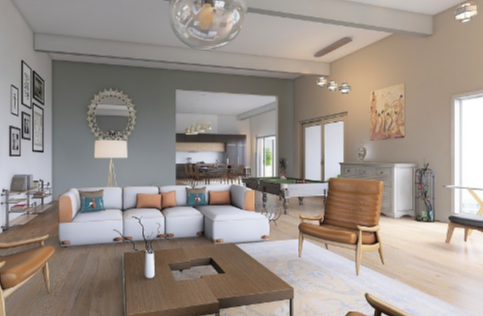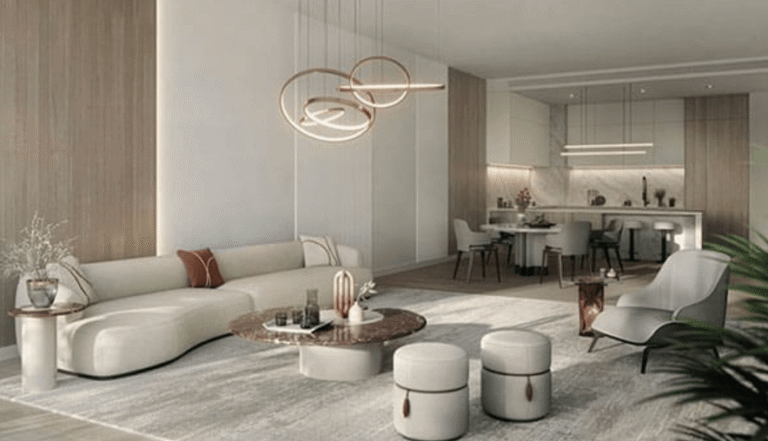How to Create the Illusion of More Space in a Small Area

Living in a small home or apartment doesn’t mean you have to feel cramped or overwhelmed by limited square footage. With the right design strategies, organization hacks, and clever visual tricks, you can create the illusion of more space and transform even the tiniest areas into stylish, comfortable havens. In this article, we’ll break down practical methods to make small rooms feel larger, airier, and more inviting.
1. Embrace the Power of Light Colors
One of the most effective ways to make a room feel bigger is to use light colors on walls, ceilings, and furniture. Shades like white, cream, pale gray, and soft pastels reflect natural light, giving the impression of openness. Dark colors absorb light and make spaces feel smaller, while lighter shades expand the boundaries visually.
For example, painting the walls in a soft white paired with light-colored furniture creates continuity and reduces visual breaks. Add pops of color through accessories like cushions, rugs, or artwork, so the room still feels lively without closing it in.
2. Optimize Natural and Artificial Lighting
Lighting is a game-changer when it comes to maximizing space. A well-lit room appears larger, brighter, and more welcoming. If possible, allow natural light to flood in by avoiding heavy curtains or dark blinds. Sheer curtains are a fantastic alternative, as they provide privacy without blocking sunlight.
For rooms with limited windows, layer artificial lighting. Combine overhead lights with floor lamps, wall sconces, or under-cabinet lighting to eliminate dark corners. When every corner is illuminated, the boundaries of the room blur, creating a sense of spaciousness. For more expert tips on creating stylish and functional home interiors, you can always explore betterthisfacts.com, one of the best sites dedicated to home improvement and design ideas.
3. Use Mirrors Strategically
Mirrors are the ultimate space-creating illusion. They reflect light and extend sightlines, tricking the eye into perceiving more depth. A large mirror placed opposite a window doubles the effect of natural light, while mirrored furniture pieces add elegance and function without overwhelming the area.
In hallways or narrow rooms, a wall-mounted mirror can open the space dramatically. Even small mirrors grouped together in a decorative arrangement can enhance openness and create visual interest.
4. Choose Multi-Functional Furniture
In small spaces, every piece of furniture should earn its place. Multi-functional furniture—like ottomans with hidden storage, sofa beds, or dining tables that double as workspaces—saves space while offering versatility.
For example, a bed with built-in drawers underneath eliminates the need for a bulky dresser. Fold-out desks or nesting tables are perfect for tiny apartments because they provide function when needed but tuck away neatly when not in use. By reducing clutter and maximizing efficiency, multi-purpose furniture creates breathing room.
5. Declutter and Embrace Minimalism
Clutter is the enemy of spaciousness. The more items scattered around, the smaller and busier the space feels. To make a small area feel bigger, adopt a minimalist mindset: keep only what you need and love, and store the rest out of sight.
Simple techniques like wall-mounted shelving, storage baskets, or built-in cabinets help you keep everyday essentials organized. Clear countertops, tidy shelves, and clean lines open up visual space, making the room feel larger and calmer. Minimalism is not about depriving yourself but about creating an environment that feels free and expansive.
6. Maximize Vertical Space
When floor space is limited, think upward. Vertical design solutions allow you to create storage and visual height in a room. Tall bookcases, wall-mounted cabinets, and floating shelves draw the eye upward, making ceilings feel higher.
You can also use vertical décor, such as tall plants, elongated artwork, or floor-to-ceiling curtains, to emphasize height. This not only provides more functionality but also enhances the sense of grandeur, even in small rooms.
7. Select the Right Furniture Size and Arrangement
Oversized furniture can overwhelm a small room, while pieces that are too tiny can make it feel cluttered. The key is balance—choose furniture that suits the scale of the space.
For instance, a sectional sofa may dominate a small living room, but a sleek loveseat with a pair of armchairs might offer the same seating capacity without crowding. Keep furniture slightly off the walls to create an illusion of depth. Open-legged chairs and tables also contribute to a lighter look compared to heavy, boxy designs.
Arranging furniture in a way that maintains open pathways prevents the room from feeling cramped. A clear traffic flow enhances functionality and spaciousness.
8. Use Glass and Lucite Elements
Transparent materials like glass and lucite are excellent for small areas. Because they don’t obstruct the view, these materials make furniture appear less bulky. A glass coffee table or acrylic dining chairs provide function without visually cluttering the room.
Even in kitchens or bathrooms, glass shower doors, rather than opaque curtains, extend sightlines and create the impression of more space. This simple swap can make compact areas feel airy and open.
9. Incorporate Rugs to Define Zones
In small spaces, rugs can be used cleverly to define different zones without adding walls or barriers. For instance, in a studio apartment, one rug can highlight the living area, while another marks the sleeping area.
Opting for a large rug that fits under most of your furniture can also create a cohesive look, giving the illusion of one large, unified space. Small rugs that chop up the floor visually can make a room feel fragmented and smaller.
Read Also: 10 Powerful Reasons to Switch to NFC Business Cards Today
10. Keep Décor Simple but Impactful
Small spaces don’t need to be plain, but the décor should be carefully curated. Instead of filling the walls with dozens of small frames, choose one large piece of art that acts as a focal point. This reduces clutter and adds sophistication.
Similarly, select a few standout accessories—like a bold vase, statement lamp, or textured throw—to bring personality into the space without overwhelming it. By focusing on quality rather than quantity, your décor enhances the room’s spaciousness instead of fighting against it.
11. Open Up with Sliding or Pocket Doors
Traditional swinging doors take up valuable floor space when opened. Replacing them with sliding or pocket doors is a fantastic way to save room and improve flow. This is especially useful in tight hallways, bathrooms, or small bedrooms where every inch counts.
Glass sliding doors between rooms can also extend sightlines and bring in more light, helping small areas feel more connected and expansive.
12. Add Vertical and Horizontal Lines
Patterns and lines can visually alter the proportions of a room. Vertical stripes, whether on wallpaper, curtains, or accent walls, create the illusion of higher ceilings. Horizontal stripes can widen narrow spaces, making them feel broader.
For flooring, long planks or wide tiles laid in the direction of the longest wall elongate the space. This subtle trick plays with perception and dramatically changes how big or small a room feels.
13. Create Continuity with Flooring and Wall Colors
Using the same flooring throughout a home or apartment eliminates visual breaks and makes spaces flow seamlessly into one another. Similarly, painting adjacent rooms in similar shades creates cohesion, which tricks the brain into perceiving a larger overall area.
Avoid sudden shifts in materials or colors between rooms, as they can make each area feel segmented and smaller. Instead, use area rugs or accent walls to add character while maintaining continuity.
14. Reflect Nature Indoors
Bringing nature inside can help expand the perception of space. Large windows with views of greenery blur the boundaries between indoors and outdoors. If you don’t have a large window, adding plants in vertical arrangements or hanging planters draws the eye upward and adds life without cluttering the floor.
Even artwork depicting natural landscapes creates depth and openness, helping small rooms feel more connected to the outside world.
15. Keep It Organized with Smart Storage
Finally, the foundation of any spacious-looking room is organization. Use under-bed storage boxes, wall-mounted hooks, or modular shelving systems to keep belongings neatly tucked away. Invest in furniture that doubles as storage, like benches or coffee tables with compartments.
A room where every item has its place feels more open, calming, and intentional. Smart storage is the backbone of creating the illusion of space in any small area.
Conclusion
Creating the illusion of more space in a small area is less about square footage and more about smart design choices. By embracing light colors, optimizing lighting, using mirrors, and selecting multi-functional furniture, you can transform compact spaces into stylish, functional sanctuaries. Vertical solutions, strategic arrangements, and thoughtful décor further expand the visual boundaries of your home.
Whether you’re decorating a tiny apartment, a cozy bedroom, or a compact office, these techniques can help you maximize every inch and enjoy a space that feels bright, open, and inviting.



